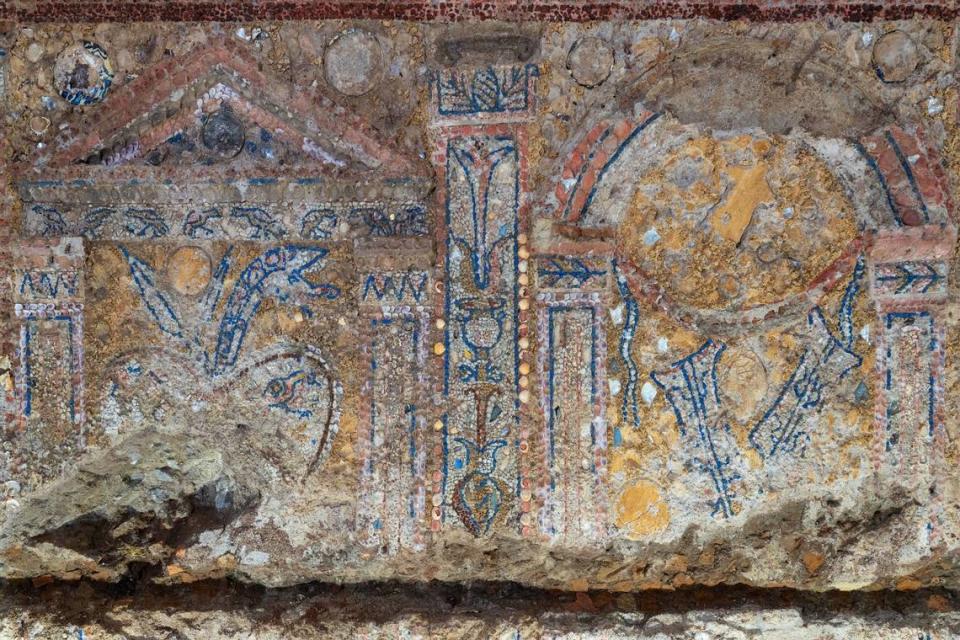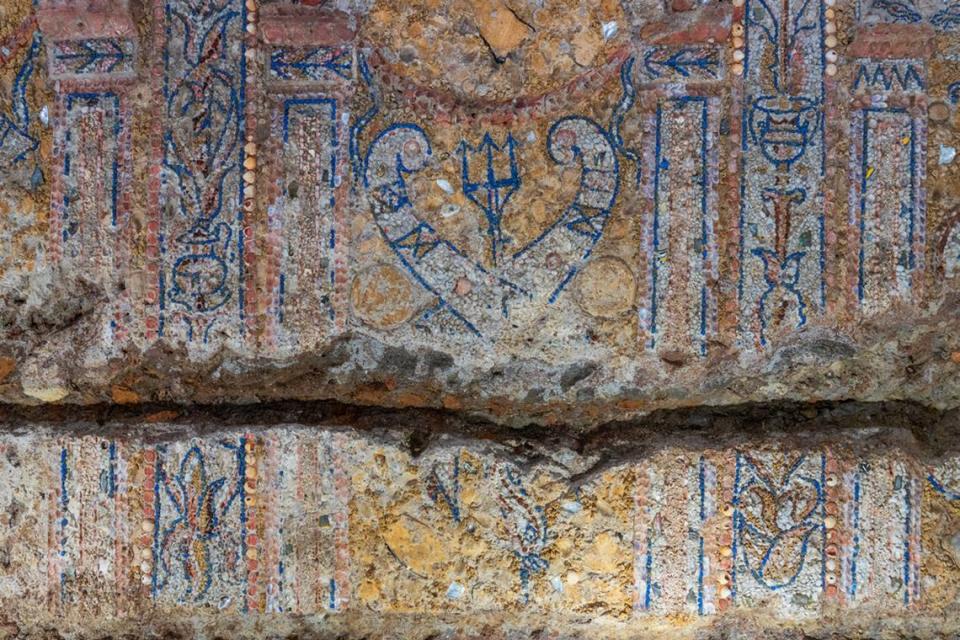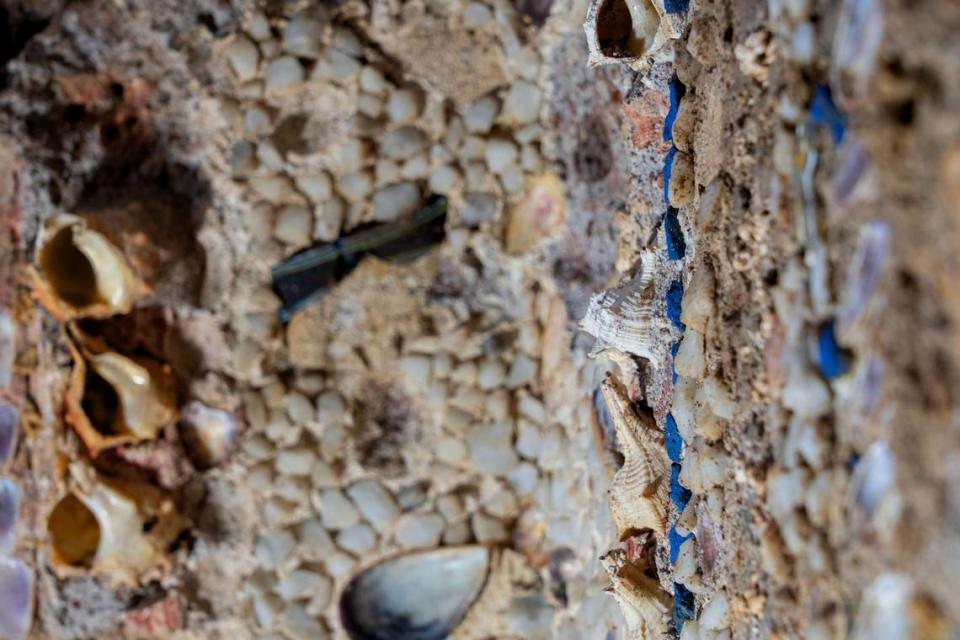Massive mosaic — dating back 2,000 years — discovered in the heart of Rome. See it
A massive mosaic, dating back 2,000 years, was recently uncovered in the heart of Rome, shedding light on the artistic sensibilities of ancient elites.
The mosaic, a stunning patchwork of vibrantly colored materials, was found adorning a wall in a ruined villa, according to a Dec. 12 news release from the Italian Ministry of Culture.
Discovered in 2018, the villa sits atop the Palatine Hill, a district in the city center — near the Roman Forum — that was once occupied by the ruling class, officials said.

“Elites lived as close as they could possibly get to the Forum, the center of action,” Jane Draycott, a Roman historian at the University of Glasgow, told McClatchy News.
Located in the villa’s banquet hall, which would have been used during the summer months, the mosaic is composed of Egyptian tiles, marble flakes, glass and seashells.
It depicts a variety of objects that conjure the military might of Rome, including tridents, trumpets and trireme ships. Also pictured is a sweeping landscape distinguished by city walls, towers and farmland.

The mosaic may have been intended to represent a military conquest undertaken by the villa’s owner, undoubtedly an aristocrat and likely one of senatorial rank, officials said.
It was common for elite families to show off their pedigrees through home decorations, including shrines dedicated to family gods, death masks and genealogical trees, Draycott said.
“It’s likely that some did commission (artwork) showing ancestors’s great victories and achievements,” Draycott added. “These would have been immediately apparent to any visitors, and would have impressed upon them how prestigious the individuals they were meeting were.”

The mosaic was dated to about 200 B.C., a time when the Roman Republic ruled over vast territories in the Mediterranean world, including parts of the Middle East and North Africa.
“In this period, a huge amount of wealth was flooding into Rome,” Draycott said. “People were competing to have the flashiest houses decorated with marble, mosaics, frescos (and) pieces of art from all around the empire.”
Also found in the villa, which is spread out over several stories, were a garden and reception room, officials said.
Excavation work will continue on the site in early 2024, after which it will be opened to the public.
Google Translate was used to translate a news release from the Italian Ministry of Culture.
Metal detectorist discovers 600-year-old Christmas gift in England. ‘Unusual to find’
1,900-year-old winery — that made drinks for ancient Romans — found in France. See it
500-year-old tablet — engraved with devil curse against two people — found in Germany

